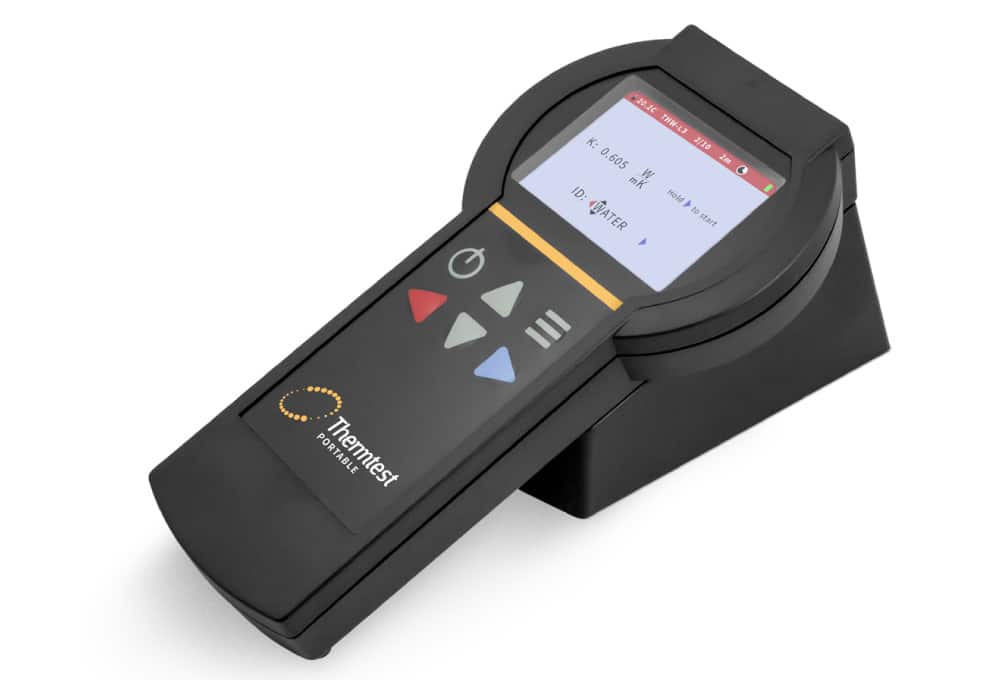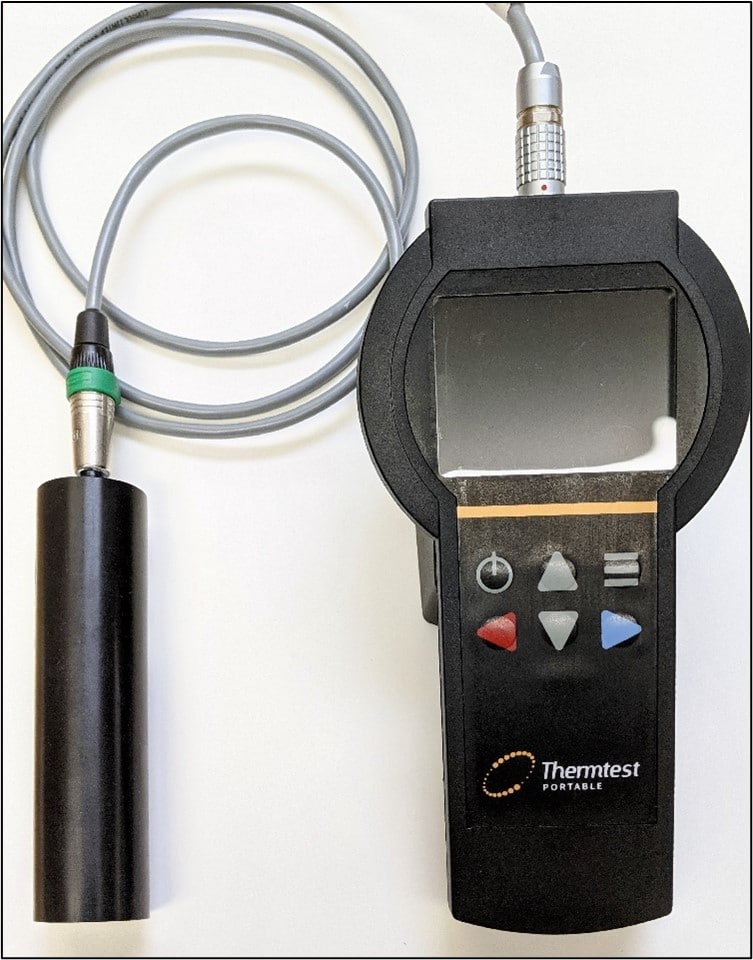Join us at the International Thermal Conductivity Conference (ITCC) and the International Thermal Expansion Symposium (ITES).
Geological
Nanomaterials
Pastes
Pastes
Polymers
The Measurement Platform-2 (MP-2) is an advanced instrument with wide selection of transient thermal conductivity sensors for a variety of applications, with a focus on primary measurements. The transient thermal conductivity sensors share similar principles of operation. The sensor wire is heated using a constant current source (q) and the temperature rise is recorded by monitoring the change in electrical resistance of the wire (THW and EFF) or by resistance temperature detector device (TLS). For samples of high thermal conductivity, resistance increases more slowly over time; for samples of low thermal conductivity, resistance increases more quickly over time.

Picture 1. Thermtest MP-2 Thermal Conductivity Meter
Thermal conductivity MP-2 users benefit from the convenience and accuracy gained when using primary testing methods. The MP-2 controller auto-detects the connected sensor and loads corresponding testing parameters. Measurements are easily performed with the smart on-board software and transferred to computer with an included Windows utility program.

Picture 2. Thermtet TLS 150mm sensor for use with the MP-2 portable meter.
The TLS 150mm sensor is one of the many sensors offered with the Thermtest Portable Measurement Platform (MP-2). This sensor offers simple yet accurate measurements of soils, pastes, powders, and solids from 0.1 to 3 W/m·K via the transient line source method, and has a temperature range of -40°C to 100°C. The TLS 150mm adheres with an internationally recognized standard of testing by complying with ASTM D5334-22 and IEEE 442-2017. The TLS 150mmhas a 5% accuracy and a 2% reproducibility of measurement, making it a highly accurate and precise instrument for measuring the thermal conductivity of soils, pastes, powders, and solids.
There are many different types of polymers commercially available, with a wide variety of applications. It is important to understand the thermal properties of the polymer sample to ensure that it is the best fit for the desired use. Nylon-66 is a thermoplastic used in a wide variety of industries, including textiles, piping, and automotive. This type of nylon is often chosen for vehicle parts near the engine, as it has a relatively low thermal conductivity and pieces can be easily made by injection molding. Another thermoplastic polymer with common uses is ultra-high molecular weight polyethylene (UHMWPE). This material is notably used in sporting equipment and the biomedical field due to its ability to resist wear and impact, as well as being available in numerous colours.
For this experiment, a hole was drilled into each polymer sample. The TLS 150mm was then covered with enough thermal paste to ensure proper contact between the sensor and the sample. The thermal conductivity of the sample can then be tested with a high degree of accuracy.

Picture 3. Set-up of the TLS 150mm needle connected to MP-2 for measuring the nylon-66 sample. A similar set-up was then used for the UHMWPE sample.
Table 1. Results of five polymer sample measurements with the Thermtest TLS 150mm sensor at room temperature.
| Sample | Average Thermal Conductivity (W/m·K) | Relative Standard Deviation (%) |
|---|---|---|
| Nylon-66 | 0.305 | 0.15 |
| UHMWPE | 0.381 | 0.25 |